 00:03:00
00:03:00
Matches
Bill reveals the importance of matches in the 19th century; he shares how adding phosphorous to them revolutionized life - in both good and bad ways
More details | Watch now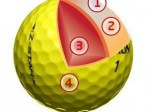 00:02:00
00:02:00
Golf Balls
To learn what's inside a golf ball - and to show how clever engineers are - Bill uses a special cutter to chop one open - well more than one.
More details | Watch now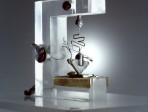 00:03:00
00:03:00
The Transistor
Bill examines the first transistor ever built. He explains how it works, and its impact on our world today. And, also, he even tests it out!
More details | Watch now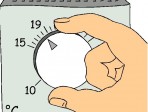 00:03:00
00:03:00
The Thermostat – Why does it look like it does?
Armed with a pair of wire cutters Bill shows how a common thermostat reveals how good industrial designers keep track of the dimensions of a human being.
More details | Watch now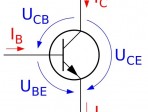 00:05:00
00:05:00
The Transistor 2
Bill shows how a transistor works by examing a replica of the first one ever build: The Bardeen-Brattain point contact transistor.
More details | Watch now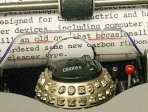 00:03:00
00:03:00
IBM Selectric Typewriter
Using slow motion video Bill Hammack shows how the mechanical digital-to-analogue converter of IBM's revolutionary 'golf ball' typewriter works.
More details | Watch now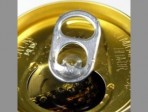 00:02:00
00:02:00
Aluminium drinks can tab
Bill uses slow motion video to show the ingenious engineering design of the apparently simple tab of a pop can.
More details | Watch now 00:02:00
00:02:00
Black Box – A flight data recorder
In designing an object an engineer must choose the proper material. Never is this more important than in the 'black box' flight data recorder.
More details | Watch now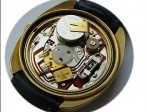 00:04:00
00:04:00
Quartz Watch
Bill takes apart a cheap watch to show how it works. He describes how a tiny quartz tuning fork keeps the time.
More details | Watch now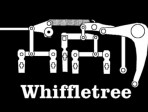 00:02:00
00:02:00
The Whiffletree
Bill describes how a whiffletree was used in early calculating devices to do mechanical digital to analog conversion. He shows briefly the device used in an IBM Selectric Typewriter.
More details | Watch now 00:03:00
00:03:00
Coffee Maker: Pumping water with no moving parts
To engineer an object means to make choices. Bill illustrates how the choice of having a single heating element made an engineer find a creative way to pump water with no moving parts.
More details | Watch now 00:13:00
00:13:00
Journey to Etna
Clive Oppenheimer, a vulcanologist working on the latest techniques to monitor and predict volcanic eruptions, demonstrates his work at Mount Etna, an active volcano in Sicily.nVolcanic eruptions pose a real threat to communities living nearby, and a....
More details | Watch now 00:15:00
00:15:00
Music’s Energy Footprint
A look at how the UK music industry is working with energy and climate researcher Catherine Bottrill to reduce its carbon footprint.nIn 2007 a group of influential people from the music industry formed Julie's Bicycle, an organisation dedicated to re....
More details | Watch now 00:15:00
00:15:00
Asthma on the Run
A look into the research of biochemist Ceri Harrop, who specialises in respiratory medicine and developing new treatments for people with breathing difficulties.nAs part of her research at the University of Manchester, Ceri meets with athlete Wayne A....
More details | Watch now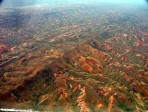 00:04:00
00:04:00
Climate Change: Madagascar
Anjali Nayar visited a pioneering project in Madagascar that's aiming to protect one of the country's few remaining forests. It's hoped that projects like this will help curb global warming. But first, these projects must overcome the poverty and pol....
More details | Watch now 01:06:00
01:06:00
Science and Art make comfortable bedfellows
With portrait painter Peter Edwards, Sir Harry Kroto discusses his love of art and science.
More details | Watch now 00:06:00
00:06:00
Emotion Recognition from Physiological Signals for Human Computer Interaction
Use of physiological signals for emotion recognition and human-computer interaction.
More details | Watch now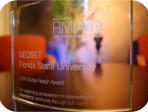 00:07:00
00:07:00
Mediasite global outreach competition winner – 2009
Steve's winning presentation in the Mediasite Global Outreach Challenge 2009
More details | Watch now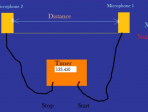 00:04:00
00:04:00
Measuring the speed of sound – experimental details
A short clip showing the measurement of the speed of sound over short distances.
More details | Watch now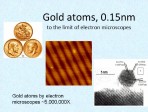 00:07:00
00:07:00
Can we see atoms?
We see smaller and smaller objects through naked eye and microscopes, from hair to atoms.
More details | Watch now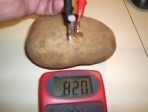 00:07:00
00:07:00
Potato Battery
When two different types of conductors are pushed into a potato chemical reactions take place charging them up - we have a simple electrochemical cell. A potato, zinc screw and carbon rod produce about 1V. We experiment joining a few of these cells u....
More details | Watch now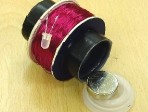 00:04:00
00:04:00
Shake-a-Gen
This is a simple yet effective demonstration of electricity generation. 500 turns of wire are wound onto a 35mm film can and the two ends are attached to an LED light. A strong magnet is placed in the can and the lid fixed back in place. The generato....
More details | Watch now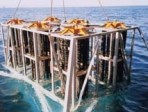 00:04:00
00:04:00
Seawater Battery
When two different metals are placed in a salt solution (an electrolyte) the chemistry produces a voltage. This is called a cell. By wiring up a number of these cells we can make a battery and use it to power electrical circuits.
More details | Watch now 00:03:00
00:03:00
Three Windmills
Converting wind power into electricity seems like an ideal way of helping to solve our energy problems. However, the power generated by a windmill is dependent on the wind speed. If the wind drops to half its speed there is as little as an 1/8th of t....
More details | Watch now
